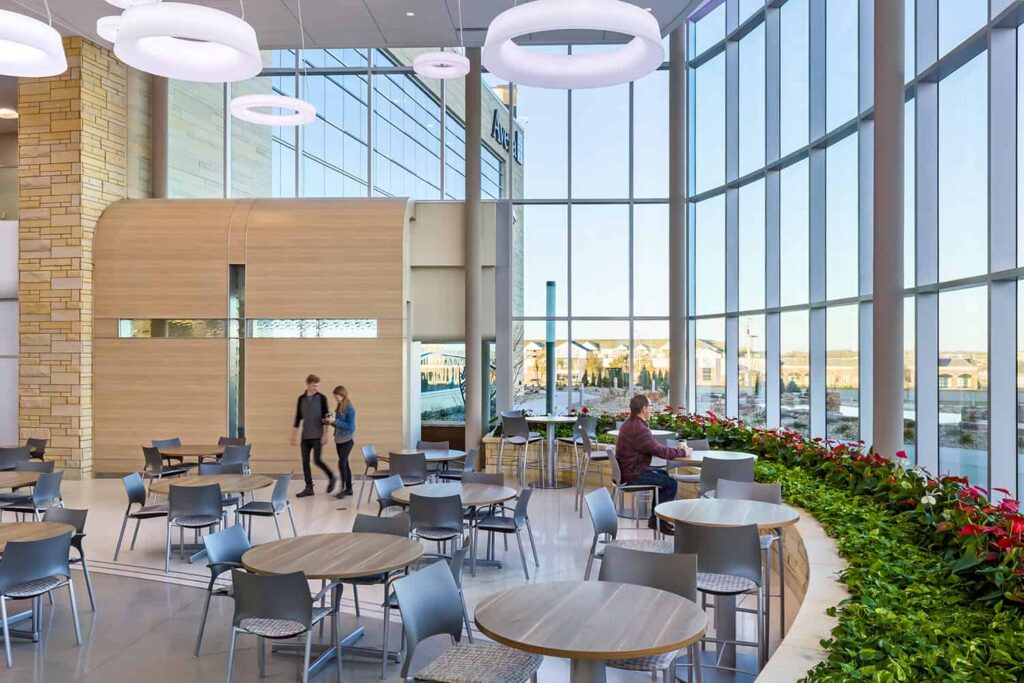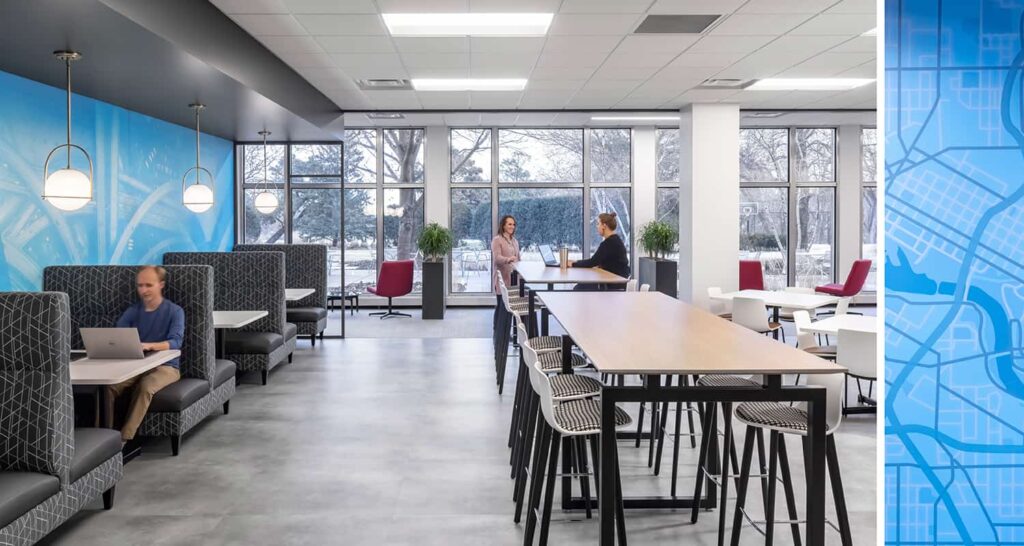Interior design has a massive impact on the way we interact with the spaces around us. It involves macro-level factors (like layout) all the way down to the details (like the finish on drawer pulls). Interior design dramatically affects mood, productivity, and even health. It also has a major impact on things like sustainability and inclusivity.
That’s a lot to take on, and it takes talented, dedicated professionals to make it work. Fortunately, we have a lot of those at BWBR, and we were lucky enough to sit down with a couple of them for a podcast episode on our popular architecture and design podcast, Side of Design.
Host Matt Gerstner met with Senior Interior Designer Lisa Miller and Interior Designer Sara Biedenbender to find out more about what they do, why it matters, and what motivates them.
Putting People at the Center
Interior design, done well, can go unnoticed. That’s really too bad, because interior designers deserve a TON of credit for what they do, but it’s also a tribute to their skill. Their job is to consider the unique needs, priorities, and preferences of an individual client, and reconcile those with budgets, building codes, supply chain availability, material durability, space restrictions, environmental factors, the architecture team, and about a million other considerations. They might make it seem effortless, with seamless results, but there’s a huge volume of practice and effort put in behind the scenes.
“The goal is to make people feel better and more refreshed when they leave [a space] than when they came into it,” says Sara. “We have the ability to affect every part of a human’s daily life who is using the space. It’s about getting the right balance of all the priorities.”
The interior designers at BWBR take a holistic, human-centered approach to design. And while a space will definitely be beautiful, as Lisa says, the spaces our team designs “aren’t just for a cool picture or a great view. It’s about the people who use the space. It’s thinking about how these spaces are affected by cultural, demographic, and societal influences, and by human behavior.”
For Lisa, Sara, and other BWBR designers, having an exceptionally thoughtful and functional space is only part of the objective. They go beyond that to think about how people could be inspired by it. And of course, the answer to that is going to be completely different every time, based on the type of space, the location, who will be using it, and how it will be used. That means they need to aim for individualized functionality and inspiration every single time.
Emotional Impact
When a space doesn’t have high-quality interior design, you definitely notice — ask anyone who has worked in a cramped office with no natural light and inadequate airflow. “You can tell when something has made you feel more chaotic,” says Sara. “When you can’t find your way and you’re stressed and the lighting is wrong.” Avoiding this kind of stress and uncertainty is all the more important when you think about the kinds of spaces our team works on — in health care settings, where patients might already be feeling unwell and worried; in educational spaces, where students need to feel supported and safe; or in workplace environments where workers want to be inspired and energized.

Lisa and Sara not only pay close attention to their client’s needs and priorities, but they also make a point of putting themselves in the figurative shoes of the people who will use the space. A client might not have the vocabulary, context, or expertise to be able to pinpoint a problem, much less identify the solution, but a knowledgeable designer can visualize the holistic experience users will have in the space, and use that understanding to make it extraordinary.
Scratching the Surface
The next time you notice a perfect wall treatment or a show-stopping light fixture, remember that you’re seeing — quite literally — just the surface level of the interior designer’s effort. They’re working within complicated restrictions and leveraging precise data combined with artistry to achieve that final result.
We also delved into sustainability, industry trends, work/life balance, and more in our conversation with Lisa and Sara — you’re not going to want to miss it! To listen to the full podcast, click here.








